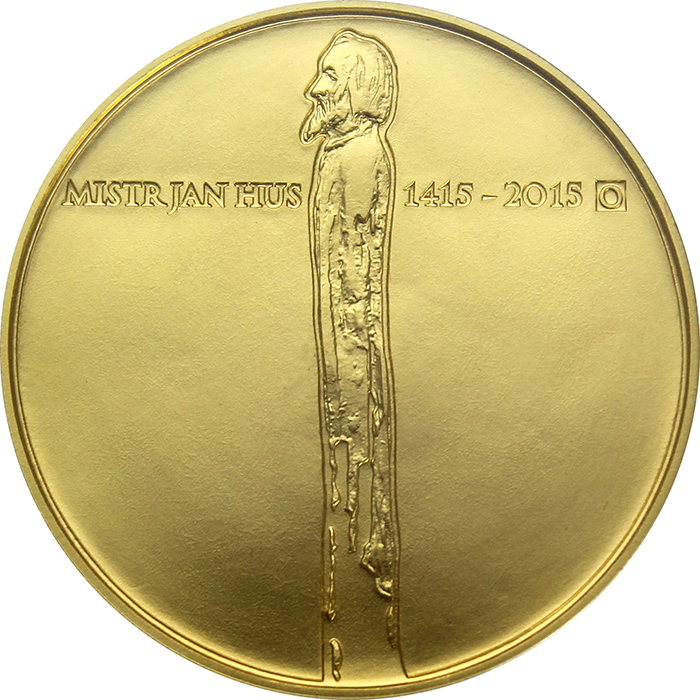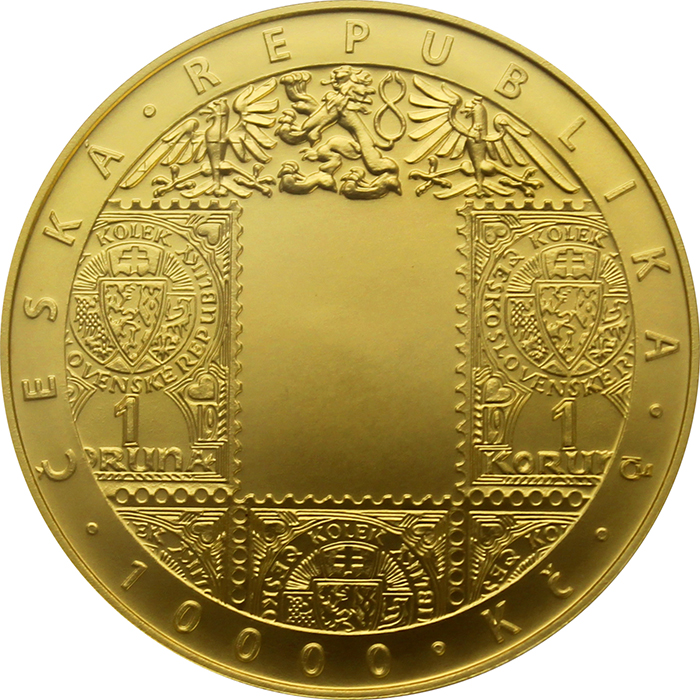Gold Coin 10000 CZK Gold Bull of Sicily 1oz 2012 Standard
The product cannot be ordered now.
NOT IN STOCK
Detailed description
Extraordinary mintage of gold coins - 10000 CZK
 On the obverse side of the coin there is a composition of heraldic animals from the great state emblem in a stylized gothic form placed in shields - at the top centre there is a Czech lion, to the right of it a Silesian eagle and to the left of it a Moravian eagle. Below the composition of heraldic animals is the denomination of the coin with the abbreviation of the monetary unit "CZK 10 000" and the name of the state "CZECH REPUBLIC". Below the text is the obverse of the seal of Frederick II as King of Sicily. The coin was minted by the Czech Mint and its mark, which is a composition of the letters 'Č' and 'M', is to the right of the seal.
On the obverse side of the coin there is a composition of heraldic animals from the great state emblem in a stylized gothic form placed in shields - at the top centre there is a Czech lion, to the right of it a Silesian eagle and to the left of it a Moravian eagle. Below the composition of heraldic animals is the denomination of the coin with the abbreviation of the monetary unit "CZK 10 000" and the name of the state "CZECH REPUBLIC". Below the text is the obverse of the seal of Frederick II as King of Sicily. The coin was minted by the Czech Mint and its mark, which is a composition of the letters 'Č' and 'M', is to the right of the seal.
On the reverse side of the coin is a stylised depiction of the presentation of the Golden Bull of Sicily. On the left is the depiction of King Frederick II of Rome-Germany and Sicily presenting the Golden Bull of Sicily to King Přemysl Otakar I of Bohemia. Their seals are depicted over the depiction of the two monarchs. Below the depiction of the rulers is the text "GOLDEN BULA OF SICILY" and the years "1212 - 2012". The author of the gold coin is Mr. Jaroslav Bejvl. His initials, which are formed by the letters "J" and "B", are between the depiction of the rulers.
Gold Bull of Sicily
 The Golden Bull of Sicily is a set of three interconnected charters whose meaning has undergone significant changes in the history of the Czech state. It was issued to Přemysl Otakar I on 26 September 1212 in Basel by the future Roman king Frederick II as a reward for the support Přemysl had given him in his fight for the imperial crown. The name of the charter, or charters, is derived from the seal attached to the document. Frederick II, as king of Sicily, had only the seal of that kingdom at that time. Frederick II did not yet possess the imperial insignia and thus the imperial typeface on his first trip to the empire.
The Golden Bull of Sicily is a set of three interconnected charters whose meaning has undergone significant changes in the history of the Czech state. It was issued to Přemysl Otakar I on 26 September 1212 in Basel by the future Roman king Frederick II as a reward for the support Přemysl had given him in his fight for the imperial crown. The name of the charter, or charters, is derived from the seal attached to the document. Frederick II, as king of Sicily, had only the seal of that kingdom at that time. Frederick II did not yet possess the imperial insignia and thus the imperial typeface on his first trip to the empire.
In fact, the term Golden Bull of Sicily nowadays covers - in both scholarly and popular literature - a total of three documents drawn up in Basel by the notary Henry of Pairis for (the future Emperor) Frederick II, which form a logical whole. The second charter is addressed to Přemysl Otakar I and the third to his brother Vladislav Henry, the Margrave of Moravia. Both of them contain the donation of estates and goods. The unclear wording in the third charter, where the goods "Mocran et Mocran" with all rights and accessories are granted and confirmed to Vladislav Henry, is still a mystery of the Bohemian Middle Ages. Many scholars have tried and are trying to locate Mocran et Mocran in the Empire as a foreign fief. Others interpret the phrase as a mistake of the notary Henry, ignorant of the Bohemian environment, and see in the background the term "Margrave of Moravia" or "Moravia and Moravia". At this time Přemysl administered the Bohemian and Vladislav the Moravian part of the kingdom, although Prague remained the official centre.
Product Specifications
Application form
Thanks to our position on the market, we can try to provide you with a product that is currently sold out or unavailable for a longer period of time. Simply fill in the application form and we will contact you as soon as we are able to secure the product.
Filling in the application form is not binding for you.
Buyback contact form
We will be happy to buy investment metals purchased from us or from our competitors. Our customers always get the highest price offered at any given time. Fill out the form below and we will contact you. Thank you for your trust.























